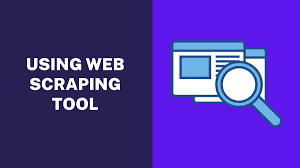In the digital landscape, data collection is a crucial task that requires access to various online resources. However, Cloudflare’s Web Application Firewall (WAF) has emerged as a significant obstacle for data collectors. This article aims to provide a comprehensive guide for data collectors on how to effectively bypass Cloudflare’s WAF using proxies. We will delve into the intricacies of Cloudflare’s security measures, explore the benefits of using proxies for bypassing Cloudflare’s WAF, and discuss strategies to overcome common challenges.

Section 1: Understanding Cloudflare’s Security Measures
Cloudflare’s WAF is designed to protect websites from various threats, including DDoS attacks, SQL injections, and scraping bots. To achieve this, Cloudflare employs a multi-layered security approach that includes a 5-second shield, human verification, WAF protection, and Turnstile CAPTCHA.
1.1 The 5-Second Shield
The 5-second shield is a rate-limiting mechanism that temporarily blocks IP addresses that make too many requests to a website within a short period. This shield is designed to prevent scraping bots from overwhelming the server with requests and causing a Denial of Service (DoS) attack.
1.2 Human Verification and Turnstile CAPTCHA
Cloudflare’s human verification measures are designed to distinguish between human and bot traffic. When a request is made from an IP address that Cloudflare suspects is a bot, it may present a CAPTCHA challenge to verify the user’s identity. Turnstile CAPTCHA is a modern, user-friendly CAPTCHA solution that combines security with usability.
1.3 WAF Protection
Cloudflare’s WAF analyzes incoming traffic and filters out requests that contain malicious payloads, such as SQL injections or cross-site scripting (XSS) attacks. This protection layer ensures that only legitimate traffic reaches the server, further safeguarding the website from scraping bots.
Section 2: The Benefits of Using Proxies for Cloudflare Bypass
Proxies play a crucial role in bypassing Cloudflare’s WAF for data collection. By routing requests through a proxy server, data collectors can mask their IP addresses, evade rate-limiting mechanisms, and bypass human verification measures.
2.1 Anonymity and IP Rotation
Proxies enable data collectors to hide their true IP addresses, making it more challenging for Cloudflare to identify and block their requests. Additionally, proxies offer IP rotation capabilities, allowing data collectors to switch IP addresses frequently, further enhancing their anonymity and reducing the likelihood of being blocked by Cloudflare.
2.2 Bypassing Rate-Limiting Mechanisms
Cloudflare’s 5-second shield is a rate-limiting mechanism that temporarily blocks IP addresses that make too many requests to a website within a short period. By using proxies, data collectors can distribute their requests across multiple IP addresses, effectively bypassing Cloudflare’s rate-limiting mechanisms and ensuring continuous data collection.
2.3 Evading Human Verification Measures
Cloudflare’s human verification measures, such as Turnstile CAPTCHA, can pose a significant challenge for data collectors. However, proxies can help bypass these measures by automatically solving CAPTCHA challenges or providing a pool of IP addresses that have already passed the human verification process.
Section 3: Bypassing Cloudflare’s WAF with Through Cloud API
Through Cloud API is a powerful tool that enables data collectors to bypass Cloudflare’s WAF effectively. By leveraging Through Cloud API’s capabilities, data collectors can overcome the challenges posed by the 5-second shield, human verification, WAF protection, and Turnstile CAPTCHA.
3.1 HTTP API and Dynamic IP Proxy
Through Cloud API provides two request modes: HTTP API and Proxy. The HTTP API allows data collectors to send requests to Through Cloud API’s servers, which then forward the requests to the target website. This approach ensures that the scraping requests appear to originate from a different IP address, bypassing Cloudflare’s rate-limiting mechanisms.
Through Cloud API’s dynamic IP proxy feature enables data collectors to rotate their IP addresses, further enhancing their anonymity and reducing the likelihood of being blocked by Cloudflare. With a global network of over 350 million city-level dynamic IPs in more than 200 countries, Through Cloud API offers unparalleled flexibility and scalability for data collection projects.
3.2 Browser Fingerprinting and Customization
To mimic human-like behavior and evade Cloudflare’s bot detection mechanisms, Through Cloud API allows data collectors to customize various browser fingerprinting features. These features include setting the Referer header, browser User-Agent, and headless status. By configuring these parameters, data collectors can create a more convincing scraping profile, increasing the likelihood of bypassing Cloudflare’s security measures.
Example: Bypassing Cloudflare’s Turnstile CAPTCHA
Let’s consider a scenario where a data collector needs to extract data from a website protected by Cloudflare’s Turnstile CAPTCHA. By using Through Cloud API, the data collector can bypass the CAPTCHA challenge and access the data seamlessly.
First, the data collector sends a request to the target website through Through Cloud API’s HTTP API. If Cloudflare detects the request as a bot and presents a Turnstile CAPTCHA challenge, Through Cloud API’s servers automatically solve the CAPTCHA challenge on behalf of the data collector. Once the CAPTCHA challenge is solved, the data collector can continue making requests to the website without any further obstacles.
Conclusion
Bypassing Cloudflare’s WAF for data collection requires a combination of technical skills and the right tools. Proxies play a crucial role in bypassing Cloudflare’s security measures, providing anonymity, IP rotation, and the ability to bypass rate-limiting mechanisms and human verification measures. Through Cloud API empowers data collectors to overcome Cloudflare’s security measures effectively, ensuring continuous data collection while maintaining a low profile. By leveraging Through Cloud API’s HTTP API, dynamic IP proxy, and browser fingerprinting features, data collectors can extract data from websites protected by Cloudflare’s WAF with ease and confidence. With Through Cloud API, data collectors can focus on their data collection projects, while Cloudflare’s security measures remain a distant concern.